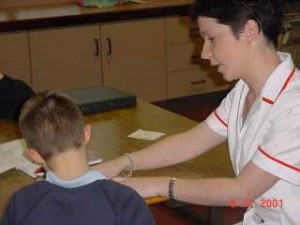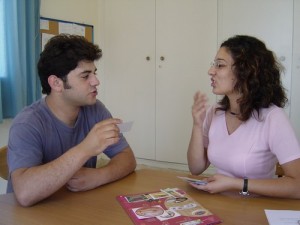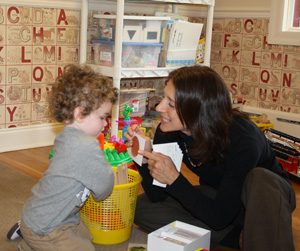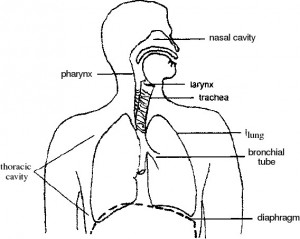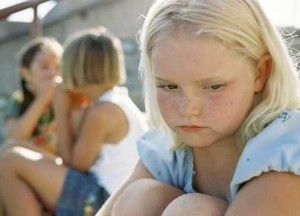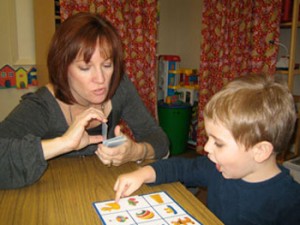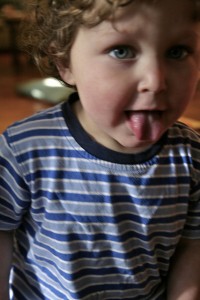A traumatic brain injury (TBI) can be generally defined as any injury to the head which damages the brain. A TBI can vary in severity and symptoms. If your child has suffered a TBI, you have likely noticed physical symptoms like dizziness and decreased coordination. TBIs also affect cognition and communication. TBIs are best treated by a team of professionals, which will likely include doctors, speech-language pathologists (SLPs), physical therapists, occupational therapists, and neuropsychologists.
Understanding Dentalized Lisps
Pronunciation & Lisps Speech DisordersA dentalized lisp is similar to a frontal or interdental lisp. With a frontal lisp, the child protrudes the tongue through the front teeth when pronouncing the “s” and “z” sounds. Children with a dentalized lisp push the tongue up against the front teeth, rather than through the front teeth. A dentalized lisp may arise during typical speech development. Some children with a dentalized lisp “grow out of it” by the time they are about four years old. However, it’s always best to bring your child to a speech-language pathologist (SLP), even if you think he might grow out of his articulation difficulty.
Understanding Lateral Lisps
Pronunciation & Lisps Speech DisordersSome types of lisps (frontal and dentalized) can arise during normal development. This is not the case with lateral or palatal lisps. When vocalizing the “s” and “z” sounds, a child with a lateral lisp directs air flow over the sides of the tongue, rather than straight down the middle of the tongue. This is often a result of incorrect tongue placement. Speech-language pathologist (SLP) Caroline Bowen notes that children with a lateral lisp often use a tongue placement for the “s” and “z” sounds that is quite similar to the tongue placement for an “l” sound.
Understanding Palatal Lisps
Pronunciation & Lisps Speech DisordersSometimes, a child can naturally “grow out of” a lisp. However, a palatal lisp is not a developmental problem, which means that your child is not likely to grow out of it. A palatal lisp occurs when your child touches the middle of his tongue to the soft palate when he pronounces the “s” and “z” sounds.
Voice Disorders
Speech DisordersThere are many different kinds of voice disorders, or vocal disorders. They range from mild to severe. Most often, a voice disorder in a child is a result of excessive yelling, coughing, throat clearing, or similar activities. They may also be caused by environmental factors, such as irritants, or by congenital abnormalities. If your child’s voice seems unusual bring him to his pediatrician to have him evaluated for a possible voice disorder.
Understanding Frontal Lisps
Pronunciation & Lisps Speech DisordersChildren with a lisp have trouble articulating the “z” and “s” sounds. While young children often have trouble pronouncing sounds, children over the age of eight can typically articulate the “s” sound. Children typically begin to learn the “z” sound at about four years of age, and they typically have a firm grasp on the sound by the time they are eight. If your child is over the age of eight and still displays a lisp, have him evaluated by a speech-language pathologist (SLP). It’s also a good idea to bring him to an SLP earlier if you think he may be displaying a language delay. The earlier a child with a lisp receives speech therapy, the more readily his articulation may be corrected.
Semantic Pragmatic Language Disorder
Speech DisordersWhat Is It?
Semantic Pragmatic Language Disorder (SPLD) is a subject of much debate. Some experts associate it with autism spectrum disorder, while others label it as purely a language disorder. While the classification of the disorder and its root causes are not well understood, the symptoms certainly are. If your child has SPLD, he has difficulty with the use of language in a social setting. He also has difficulty understanding the meanings of words and phrases, particularly idioms and abstract concepts.
Receptive Language Disorders
Speech DisordersWhat Is It?
A child with a receptive language disorder has problems understanding spoken language. He may also experience difficulties interpreting written language. Like other language disorders, these issues are not usually linked to the child’s intelligence. Some children have a mixed receptive-expressive language disorder, which means that they also have difficulty expressing themselves. In most cases, parents will notice the symptoms of a receptive language disorder before the child reaches his fourth birthday.
Coping with Expressive Language Disorders
Speech DisordersExpressive language refers to the way in which a person expresses his ideas or feelings verbally or nonverbally. Receptive language refers to the ability of a person to understand another person’s communication. A child could have a mixed expressive and receptive language disorder or just an expressive language disorder. A developmental expressive language disorder has no known cause, while an acquired disorder is generally the result of a traumatic brain injury or a similar medical problem.
Is My Child Tongue-Tied?
Speech DisordersCommunicating with your child can be difficult sometimes even without a speech disorder to get in the way. But what if your child has a physical problem that interferes with his speech? We’ve all heard the expression “tongue-tied” to describe someone at a loss for words. However, ankyloglossia, or tongue tie, is a real physical condition.


